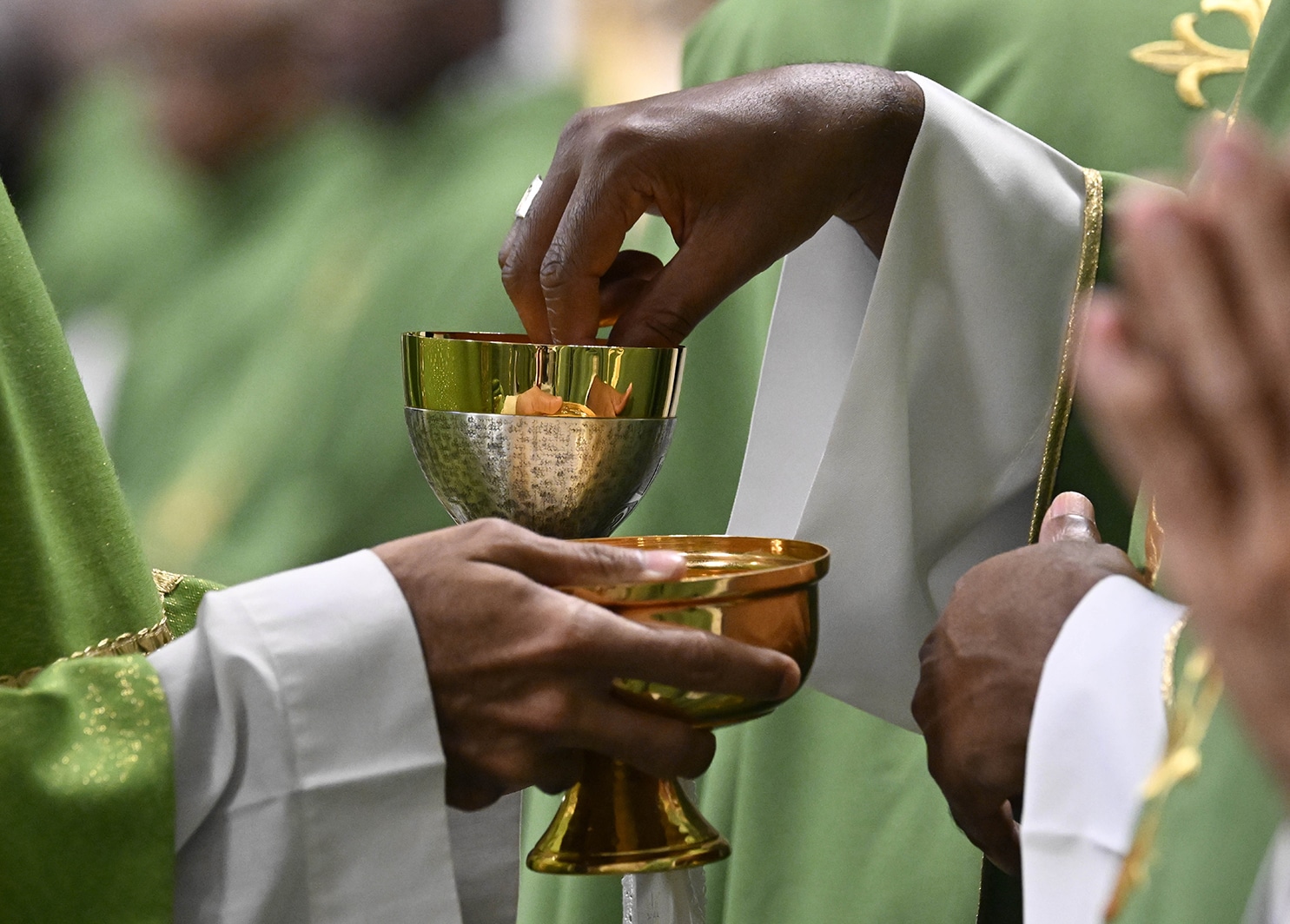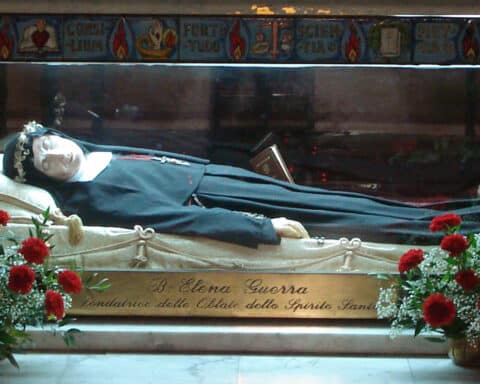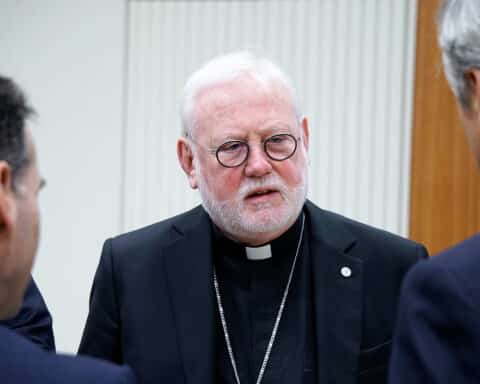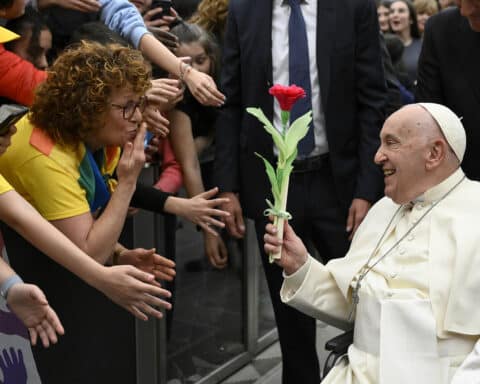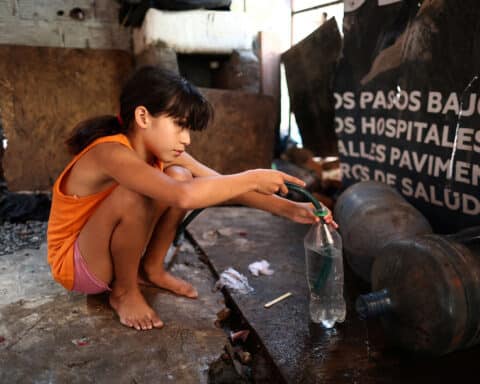VATICAN CITY (CNS) — Catholics need to know what their words and gestures at Mass signify and evoke, a liturgical expert said.
“What does it mean to be standing or kneeling? To have my hands joined or extended?” are questions Catholics should be able to answer, Father Ricardo Reyes Castillo, an official in the Vatican Dicastery for Divine Worship and the Discipline of the Sacraments, told Catholic News Service.
“If we don’t know these things or we only know parts of them outside of their whole context,” it is a sign of not understanding and being fully engaged in the liturgy, he said during a late January interview.
Father Reyes said he believes that since the Second Vatican Council, the Church has been so focused on ensuring the forms and texts used at Mass are correct that it has not devoted enough energy to communicating the meaning of the Mass to the faithful.
The council’s Constitution on the Sacred Liturgy (Sacrosanctum Concilium) “spoke about the importance of reworking the texts of rituals, which was an immense task, but this work had to proceed together with liturgical formation,” he said.
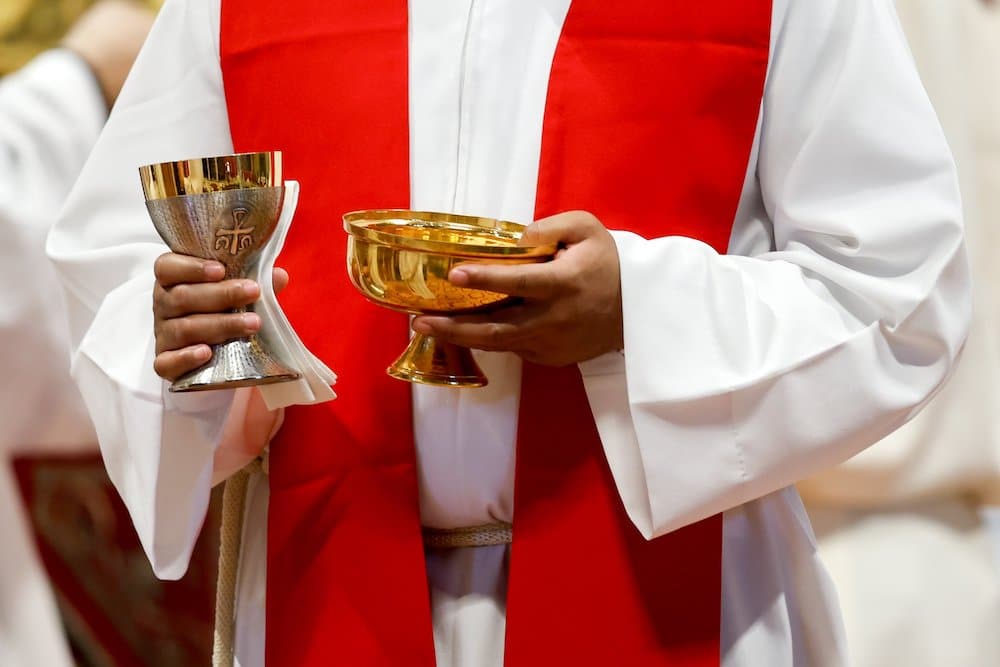
Knowing the significance of the texts
“The work on the texts of was so large that formation got left aside,” Father Reyes said. “The problem is that today when we find ourselves with even very rich texts, we don’t truly know their significance.”
Father Reyes’ concern is one that is shared by the pope. In June 2022, Pope Francis published Desiderio Desideravi (“I have earnestly desired”), an apostolic letter “on the liturgical formation of the people of God,” in which he invited the whole Church “to rediscover, to safeguard and to live the truth and power of the Christian celebration.”
The Dicastery for Divine Worship and the Discipline of the Sacraments said in a press release at the time that the pope’s letter brought together many of the propositions that came out of the dicastery’s 2019 plenary session on liturgical formation of the faithful.
‘The Mass Revealed’ immerses Catholics in the Mass
Father Reyes said that is why he wrote his book, “The Mass Revealed,” as an accessible way to immerse Catholics in the fullness of Mass.
Written in a question-and-answer format and accompanied by illustrations, the book is not intended for children, he said, but to “allow everyone to enter into the greatness of the eucharistic event.”
He told CNS that many of the questions in the book were inspired by questions he was asked during a six-month period when he lived as a priest in a center for young people struggling with issues related to substance abuse.
The format of the book was intended to be accessible, since today people are accustomed to “quick, constantly changing information and images,” he said.
“To me, the Eucharist is repose, strength, forgiveness, light, hope, expectation, movement, surprise, and above all Love, which gives meaning and color to all things,” Father Reyes wrote in the book’s introduction. “For this reason, it is my desire to write in a simple manner about the awe I experience each time I celebrate the Eucharist. I will do this by means of two fictional characters: a boy (who asks questions), and a monkey (who answers him).”
The book’s questions range from the general, such as “What is the Mass?” to specific elements of the liturgy, like why people give money during the presentation of gifts. The book’s main protagonists also ask one another deeper questions about the nature of sin and how one can engage with the Holy Spirit. The book, only 92 pages long, is available in English, Spanish and Italian from online booksellers.
Deep spiritual meaning of the Mass
Father Reyes said that many gestures performed during Mass have a deep spiritual meaning that is often lost on people. As an example, he cited how every Mass begins and ends with the celebrating priest kissing the altar, which conveys how the Mass is the act of entering into a loving relationship with God.
When even adults lack a full understanding of the Mass, he said, it should not be surprising that many young people today do not want to attend Mass “because they do not understand the meaning of what they are doing.”
“As Christians today we need more than ever to find the true meaning behind what we do,” he said.
Liturgical formation
To that end, Father Reyes proposed that each parish offer a brief, simple, but intentional liturgical formation course for adults “just as kids have catechesis before their (first) Communion or confirmation.”
In societies where interest in religion is waning, he said, evangelization increasingly depends on people acting as witnesses of their faith to others. Yet without a full appreciation of the Mass, Christians today are “not able to completely transmit what they what to” about their faith. Instead, they “risk talking without communicating.”
“The task of Christians today is not to tell others what to do, but to how live out what they believe,” he said. Namely, that the “Eucharist is not just something that is nice,” but is “the greatest treasure we have.”

